Satakunta (Finland)
Experiment
The Satakunta forest diversity experiments were established in 1999-2000 to study the effects of tree species richness, functional diversity (broadleaved vs. coniferous), and intraspecific genetic diversity on different aspects of ecosystem functioning in boreal forests.
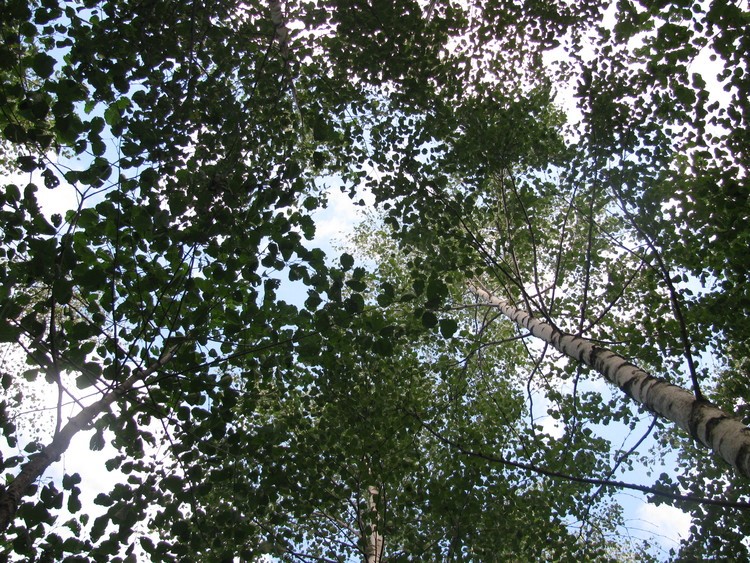
Design
Tree species diversity experiment
The experiment was established in spring 1999 on three clear-cut areas (about 1.5-2 ha each) in the Satakunta area, south-western Finland: area 1,area 2, and area 3.
Each area contains 38 plots randomly allocated to 19 treatments (monocultures and various mixtures of 5 tree species). There are 2 replicates of each treatment per area (6 replicates altogether). Species mixtures are composed in such a way that they represent a gradient from completely coniferous forest (pine, spruce and larch) through mixed conifer/deciduous stands to deciduous ones (birch and alder). Plots are 20 m x 20 m and contain 13 rows with 13 seedlings in each row (i.e., 169 seedlings per plot) planted at 1.5 m intervals. In mixed stands, different tree species are present in equal proportions (50 : 50, 33 : 33 : 33 or 20 : 20 : 20 : 20 : 20), but species positions within a plot are random to mimic natural stands. The tree material used in this experiment originated from a local tree nursery, is genetically diverse and of local southern Finnish provenances.
One replicate of each treatment within an area was thinned in 2013, providing the opportunity to compare tree species diversity effects at two different densities.
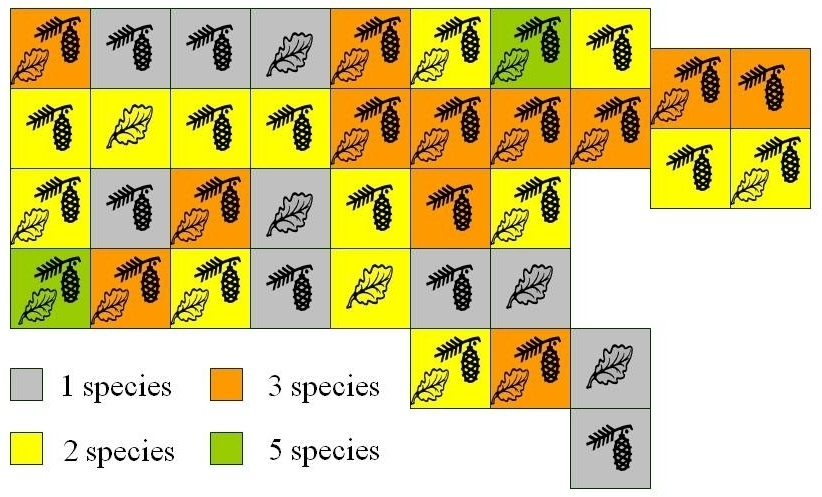
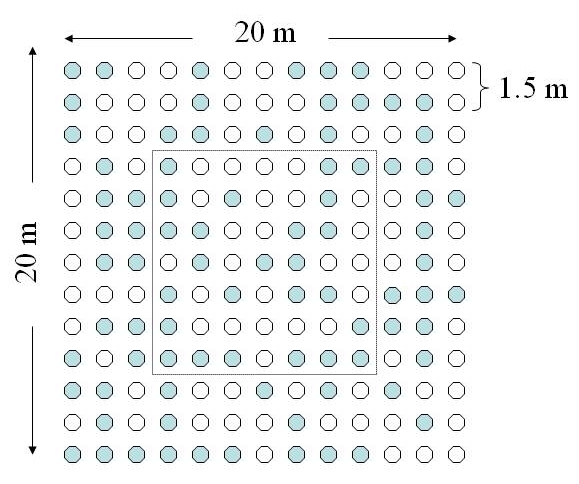
Birch clone diversity experiment
The experiment has been established near Lankoski, SW Finland, in 2000. It consists of a single 2 ha area containing 48 plots of 20 m x 20 m planted with eight different genotypes of silver birch. The eight silver birch genotypes used in the experiment are of southern Finnish origin (61-63 ºN) and have been obtained by micropropagation of vegetative buds of mature trees. The eight clones selected for the experiment are known to differ in their growth and leaf characteristics as well as in resistance to herbivores and pathogens. Plots are randomly assigned to the following genotypic diversity treatments: single-genotype plots, two-genotype mixtures (5 different combinations), four-genotype mixtures (5 different combinations), and an eight-genotype mixture. Each particular genotype combination is replicated 2-6 times within the experimental area, allowing separation of effects of genotype diversity and genotype composition. In mixed stands, different birch clones are planted in equal proportions and their positions within plots are randomized. We originally planted 100 trees per plot (10 rows, 10 trees in each at 2 m intervals).
The experiment was thinned in 2013 to reduce tree density by half while keeping proportions of different clones equal.
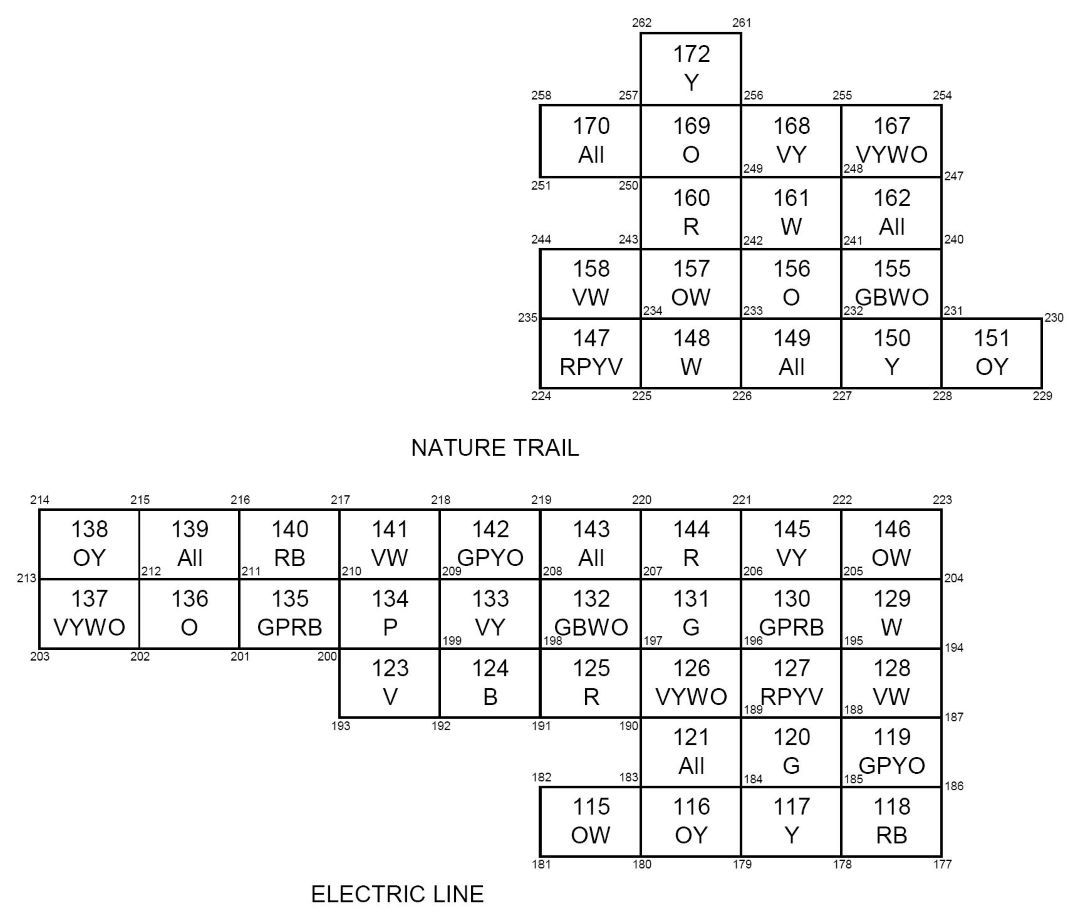
Site characteristics
| Satakunta-tree species (Pomarkku, Onnenkoski) | Satakunta-birch clones (Lankoski) | |
|---|---|---|
| Country | Finland | Finland |
| Biome | boreal | boreal |
| Latitude | 61.715290000000003 | 61.813110000000002 |
| Longitude | 21.979669999999999 | 21.66666 |
| Soil type | podzols | podzols |
| Former land use | coniferous forest (mainly spruce) clear-cut in 1998 stumps and minor branches left on site |
coniferous forest (mainly spruce) clear-cut in 1999 stumps and minor branches left on site |
| Altitude | 20-60 m | 30 m |
| Design | stem-wise randomisation | stem-wise randomisation |
| Plot shape | square | square |
| Plot size (m^2) | 400 m² | 400 m² |
| Plant distance (m) | 1.5 | 2 |
| Number of trees planted | 19 266 | 4800 |
| Planting date | 1999 | 2000 |
| Diversity variables | species richness functional diversity |
genetic diversity |
| Diversity gradient | 1, 2, 3, 5 sp. broadleaved, coniferous |
1, 2, 4, 8 clones |
| Size species pool | 5 | 1 (8 clones) |
| Species pool | Alnus glutinosa Betula pendula Larix sibirica Picea abies Pinus sylvestris |
Betula pendula |
| Contact person | Julia Koricheva | Julia Koricheva |
| Julia.Koricheva@rhul.ac.uk | Julia.Koricheva@rhul.ac.uk |
Research
The research in the Satakunta forest diversity experiments focuses on unravelling the relationships between tree species and genetic diversity on various above- and belowground processes including tree growth and survival, light absorption and light use efficiency, insect and mammalian herbivory, litter decomposition, and soil microbial processes. Our current research explores to what extent tree species richness and genotypic diversity effects on ecosystem processes are mediated by changes in tree growth and plant secondary metabolites. Taken together, the Satakunta tree species diversity and birch clone diversity experiments provide a unique opportunity to compare effects of trees species and intraspecific genetic diversity on boreal forest ecosystem functioning and services.
Extra information
Send an e-mail to the contact person, visit the experiment’s own website, or explore the publications that utilized data from this experiment.
PhD thesis
- Cooper A 2023 Effects of Tree Species Diversity on Forest Structure and Ecosystem Services in Boreal Forests. PhD thesis, Royal Holloway University of London
- Muiruri EW 2016 The mechanisms of forest diversity effects on insect herbivores. PhD thesis, Royal Holloway University of London
- Nguyen D 2015 Effects of tree species diversity on foliar fungal distribution. PhD thesis, Swedish University of Agricultural Sciences Uppsala
- Morath S 2013 Effects of tree species diversity on insect herbivory. PhD thesis, Royal Holloway University of London
Research papers
- Augusto L, Borelle R, Boča A, Bon L, Orazio C, Arias-González A, Bakker MR, Gartzia-Bengoetxea H, Bernier AF, Cantero A, Cavender-Bares J, Correia AH, De Schrijver A, Diez-Casero JJ, Eisenhauer N, Fotelli MN, Gâteblé G, Godbold DL, Gomes-Caetano-Ferreira, Gundale MJ, Jactel H, Koricheva J, Larsson M, Laudicina VA, Legout A, Martín-García J, Mason WL, Meredieu C, Mereu S, Montgomery RA, Musch B, Muys B, Paillassa E, Paquette A, Parker JD, Parker WC, Ponette Q, Reynolds C, Rozados-Lorenzo MJ, Ruiz-Peinado R, Santesteban-Insausti X, Scherer-Lorenzen M, Silva-Pando FJ, Smolander A, Spyroglou G, Teixeira-Barcelos EB, Vanguelova EI, Verheyen K, Vesterdal L, Charru M 2025 Widespread slow growth of acquisitive tree species. Nature 640: 395–401 - doi: 10.1038/s41586-025-08692-x
- Felix JA, Stevenson PC, Barsoum N, Koricheva J 2025 Stand diversity does not mitigate increased herbivory on climate‐matched oaks in an assisted migration experiment. Plant, Cell & Environment 48(5):3620-3631 - doi.org/10.1111/pce.15383
- Koricheva J, Barton KE, Felix JA, Cooper A, Jensen J, Jucker T, Ruohomäki K 2025 Using long‐term tree diversity experiments to explore the mechanisms of temporal shifts in forest ecosystem functioning. Oikos 4:e10872 - doi.org/10.1111/oik.10872
- Blondeel H, Guillemot J, Martin‐StPaul N, Druel A, Bilodeau‐Gauthier S, Bauhus J, … Baeten L 2024 Tree diversity reduces variability in sapling survival under drought. Journal of Ecology 112(5): 1164-1180 - https://doi.org/10.1111/1365-2745.14294
- Luo S, Schmid B, Hector A, Scherer‐Lorenzen M, Verheyen K, Barsoum N, Bauhus J, Beyer F, Bruelheide H, Ferlian O, Godbold D, Hall JS, Hajek P, Huang Y, Hölscher D, Kreft H, Liu X, Messier C, Nock C, Paquette A, Parker JD, Parker WC, Paterno GB, Reich PB, Rewald B, Sandén H, Sinacore K, Stefanski A, Willams L, Eisenhauer N 2024 Mycorrhizal associations modify tree diversity− productivity relationships across experimental tree plantations. New Phytologist 243:1205-1219 - doi: 10.1111/nph.19889
- Vázquez-González C, Castagneyrol B, Muiruri EW, Barbaro L, Abdala-Roberts L, Barsoum N, Fründ J, Glynn C, Jactel H, McShea WJ, Mereu S, Mooney KA, Morillas L, Nock CA, Paquette A, Parker JD, Parker, WC, Roales J, Scherer-Lorenzen M, Schuldt A, Verheyen K, Weih M, Yang B, Koricheva J 2024 Tree diversity enhances predation by birds but not by arthropods across climate gradients. Ecology Letters (27): e14427 - https://doi.org/10.1111/ele.14427
- Zheng L, Barry KE, Guerrero-Ramírez NR, Craven D, Reich PB, Verheyen K, … Hautier Y 2024 Effects of plant diversity on productivity strengthen over time due to trait-dependent shifts in species overyielding. Nature communications 15(1): 2078 - https://doi.org/10.1038/s41467-024-46355-z
- Depauw L, De Lombaerde E, Dhiedt E, Blondeel H, Abdala-Roberts L, Auge H, Barsoum N, Bauhus J, Chu C, Damtew A, Eisenhauer N, V. Fagundes M, Ganade G, Gendreau-Berthiaume B, Godbold D, Gravel D, Guillemot J, Hajek P, Hector A, Hérault B, Jactel H, Koricheva J, Kreft H, Liu X, Mereu S, Messier C, Muys B, Nock CA, Paquette A, Parker JD, Parker WC, Paterno, GB, Perring MP, Ponette Q, Potvin C, Reich PB, Rewald B, Scherer-Lorenzen M, Schnabel F, Sousa-Silva R, Weih M, Clara Zemp D, Verheyen K, Baeten L 2024 Enhancing Tree Performance Through Species Mixing: Review of a Quarter-Century of TreeDivNet Experiments Reveals Research Gaps and Practical Insights. Current Forestry Reports - https://doi.org/10.1007/s40725-023-00208-y
- Felix JA, Stevenson PC, Koricheva J. 2023 2023 Plant neighbourhood diversity effects on leaf traits: A meta-analysis. Functional Ecology (37): 3150–3163 - doi: 10.1111/1365-2435.14441.
- FAO 2023 Towards more resilient and diverse planted forests. Unasylva (254)74: 2031/1. Rome. https://doi. org/10.4060/cc8584en
- Cesarz S, Craven D, Auge H, Bruelheide H, Castagneyrol B, Gutknecht J, Hector A, Jactel H, Koricheva J, Messier C, Muys B, Brien MJO, Paquette A, Ponette Q, Potvin C, Reich PB, Scherer-Lorenzen M, Smith AR, Verheyen K, Eisenhauer N 2022 Tree diversity effects on soil microbial biomass and respiration are context dependent across forest diversity experiments. Global Ecology and Biogeography 31:872-885 - https://doi.org/10.1111/geb.13461
- Messier C, Bauhus J, Sousa-Silva R, Auge H, Baeten L, Barsoum N, Bruelheide H, Caldwell B, Cavender-Bares J, Dhiedt E, Eisenhauer N, Ganade G, Gravel D, Guillemot J, Hall JS, Hector A, Hérault B, Jactel H, Koricheva J, Kreft H, Mereu S, Muys B, Nock CA, Paquette A, Parker JD, Perring MP, Ponette Q, Potvin C, Reich PB, Scherer-Lorenzen M, Schnabel F, Verheyen K, Weih M, Wollni M, Zemp DC 2021 For the sake of resilience and multifunctionality, let’s diversify planted forests! Conservation Letters e12829 - https://doi.org/10.1111/conl.12829
- Poeydebat C, Jactel H, Moreira X, Koricheva J, Barsoum N, Bauhus J, Eisenhauer N, Ferlian O, Francisco M, Gottschall F, Gravel D, Mason B, Muiruri E, Muys B, Nock C, Paquette A, Ponette Q, Scherer‐Lorenzen M, Stokes V, Staab M, Verheyen K and Castagneyrol B 2020 Climate affects neighbour‐induced changes in leaf chemical defences and tree diversity‐herbivory relationships. Functional Ecology - doi:10.1111/1365-2435.13700
- Kambach S, Allan E, Bilodeau-Gauthier S, Coomes D A, Haase J, Jucker T, Kunstler G, Muller S, Nock C, Paquette A, van der Plas F, Ratcliffe S, Roger F, Ruiz-Benito P, Scherer-Lorenzen M, Auge H, Bouriaud O, Castagneyrol B, Dahlgren J, Gamfeldt L, Jactel H, Kandler G, Koricheva J, Lehtonen A, Muys B, Ponette Q, Setiawan N, Van de Peer T, Verheyen K, Zavala M A, Bruelheid H 2019 How do trees respond to species mixing in experimental compared to observational studies? Ecology and Evolution 9: 11254-11265 - https://doi.org/10.1002/ece3.5627
- Muiruri EW, Barantal S, Iason GR, Salminen J-P, Perez-Fernandez E 2018 Forest diversity effects on insect herbivores: do leaf traits matter? New Phytologist 221(4): 2250-2260 - https://doi.org/10.1111/nph.15558
- Otsing E, Barantal S, Anslan S, Koricheva J, Tedersoo L 2018 Litter species richness and composition effects on fungal richness and community structure in decomposing foliar and root litter. Soil Biology and Biochemistry 125: 328-339 - https://doi.org/10.1016/j.soilbio.2018.08.006
- Grossman JJ, Vanhellemont M, Barsoum N, Bauhus J, Bruelheide H, Castagneyrol B, Cavender-Bares J, Eisenhauer N, Ferlian O, Gravel D, Hector A, Jactel H, Kreft H, Mereu S, Messier C, Muys B, Nock C, Paquette A, Parker J, Perring MP, Ponette Q, Reich PB, Schuldt A, Staab M, Weih M, Zemp DC, Scherer-Lorenzen M, Verheyen K 2018 Synthesis and future research directions linking tree diversity to growth, survival, and damage in a global network of tree diversity experiments. Environmental and Experimental Botany 152: 68-89 - doi: 10.1016/j.envexpbot.2017.12.015
- Koricheva J, Hayes D 2018 The relative importance of plant intraspecific diversity in structuring arthropod communities: A meta-analysis. Functional Ecology 32: 1704-1717 - doi: 10.1111/1365-2435.13062
- Guerrero-Ramírez NR, Craven D, Reich PB, Ewel JJ, Isbell F, Koricheva J, Parrotta JA, Auge H, Erickson HE, Forrester DI, Hector A, Joshi J, Montagnini F, Palmborg C, Piotto D, Potvin C, Roscher C, van Ruijven J, Tilman D, Wilsey B, Eisenhauer N 2017 Diversity-dependent temporal divergence of ecosystem functioning in experimental ecosystems. Nature Ecology & Evolution 1(11): 1639-1642 - doi: 10.1038/s41559-017-0325-1
- Muiruri EW, Koricheva J 2017 Going undercover: increasing canopy cover around a host tree drives associational resistance to an insect pest. Oikos 126: 339-349 - doi: 10.1111/oik.03307
- Nguyen D, Boberg J, Cleary M, Bruelheide H, Hönig L, Koricheva J, Stenlid J 2017 Foliar fungi of Betula pendula: impact of tree species mixtures and assessment methods. Scientific Reports 7: 41801 - doi: 10.1038/srep41801
- Muiruri EW, Rainio K, Koricheva J 2016 Do birds see the forest for the trees? Scale-dependent effects of tree diversity on avian predation of artificial larvae. Oecologia 180: 619-630 - doi: 10.1007/s00442-015-3391-6
- Tedersoo L, Bahram M, Cajthaml T, Põlme S, Hiiesalu I, Anslan S, Harend H, Buegger F, Pritsch K, Koricheva J, Abarenkov K 2016 Tree diversity and species identity effects on soil fungi, protists and animals are context dependent. The ISME Journal 10: 346-362 - doi: 10.1038/ismej.2015.116
- Verheyen K, Vanhellemont M, Auge H, Baeten L, Baraloto C, Barsoum N, Bilodeau-Gauthier S, Bruelheide H, Castagneyrol B, Godbold D, Haase J, Hector A, Jactel H, Koricheva J, Loreau M, Mereu S, Messier C, Muys B, Nolet P, Paquette A, Parker J, Perring M, Ponette Q, Potvin C, Reich P, Smith A, Weih M, Scherer-Lorenzen M 2016 Contributions of a global network of tree diversity experiments to sustainable forest plantations. Ambio 45: 29-41 - doi: 10.1007/s13280-015-0685-1
- Barton KE, Valkama E, Vehviläinen H, Ruohomäki K, Knight TM, Koricheva J 2015 Additive and non-additive effects of birch genotypic diversity on arthropod herbivory in a long-term field experiment. Oikos 124: 697-706 - doi: 10.1111/oik.01663
- Domisch T, Finér L, Dawud SM, Vesterdal L, Raulund-Rasmussen K 2015 Does species richness affect fine root biomass and production in young forest plantations? Oecologia 177: 581-594 - doi: 10.1007/s00442-014-3107-3
- Haase J, Castagneyrol B, Cornelissen JHC, Ghazoul J, Kattge J, Koricheva J, Scherer-Lorenzen M, Morath S, Jactel H 2015 Contrasting effects of tree diversity on young tree growth and resistance to insect herbivores across three biodiversity experiments. Oikos 124: 1674-1685 - doi: 10.1111/oik.02090
- Muiruri EW, Milligan HT, Morath S, Koricheva J 2015 Moose browsing alters tree diversity effects on birch growth and insect herbivory. Functional Ecology 29: 724-735 - doi: 10.1111/1365-2435.12407
- Paine CET, Amissah L, Auge H, Baraloto C, Baruffol M, Bourland N, Bruelheide H, Daïnou K, de Gouvenain RC, Doucet J-L, Doust S, Fine PVA, Fortunel C, Haase J, Holl KD, Jactel H, Li X, Kitajima K, Koricheva J, Martínez-Garza C, Messier C, Paquette A, Philipson C, Piotto D, Poorter L, Posada JM, Potvin C, Rainio K, Russo SE, Ruiz-Jaen M, Scherer-Lorenzen M, Webb CO, Wright SJ, Zahawi RA, Hector A 2015 Globally, functional traits are weak predictors of juvenile tree growth, and we do not know why. Journal of Ecology 103: 978-989 - doi: 10.1111/1365-2745.12401
- Ampoorter E, Baeten L, Koricheva J, Vanhellemont M, Verheyen K 2014 Do diverse overstoreys induce diverse understoreys? Lessons learnt from an experimental-observational platform in Finland. Forest Ecology and Management 318: 206-215 - doi: 10.1016/j.foreco.2014.01.030
- Pollastrini M, Holland V, Brüggemann W, Koricheva J, Jussila I, Scherer-Lorenzen M, Berger S, Bussotti F 2014 Interactions and competition processes among tree species in young experimental mixed forests, assessed with chlorophyll fluorescence and leaf morphology. Plant Biology 16: 323-331 - doi:10.1111/plb.12068
- Grossiord C, Granier A, Gessler A, Pollastrini M, Bonal D 2013 The influence of tree species mixture on ecosystem-level carbon accumulation and water use in a mixed boreal plantation. Forest Ecology and Management 298: 82-92 - doi: 10.1016/j.foreco.2013.03.001
- Milligan HT, Koricheva J 2013 Effects of tree species richness and composition on moose winter browsing damage and foraging selectivity: an experimental study. Journal of Animal Ecology 82: 739-748 - doi: 10.1111/1365-2656.12049
- Vehviläinen H, Koricheva J, Ruohomäki K 2008 Effects of stand tree species composition and diversity on abundance of predatory arthropods. Oikos 117: 935-943 - doi: 10.1111/j.0030-1299.2008.15972.x
- Kaitaniemi P, Riihimäki J, Koricheva J, Vehviläinen H 2007 Experimental evidence for associational resistance against the European pine sawfly in mixed tree stands. Silva Fennica 41: 259-268
- Vehviläinen H, Koricheva J, Ruohomäki K 2007 Tree species diversity influences herbivore abundance and damage: meta-analysis of long-term forest experiments. Oecologia 152: 287-298 - doi: 10.1007/s00442-007-0673-7
- Riihimäki J, Vehviläinen H, Kaitaniemi P, Koricheva J 2006 Host tree architecture mediates the effects of predators on herbivore survival. Ecological Entomology 31: 227-235 - doi: 10.1111/j.1365-2311.2006.00784.x
- Vehviläinen H, Koricheva J 2006 Moose and vole browsing patterns in experimentally manipulated pure and mixed forest stands. Ecography 29: 497-506 - doi: 10.1111/j.0906-7590.2006.04457.x
- Riihimäki J, Kaitaniemi P, Koricheva J, Vehviläinen H 2005 Testing the enemies hypothesis in forest stands: the important role of tree species composition. Oecologia 142: 90-97 - doi: 10.1007/s00442-004-1696-y
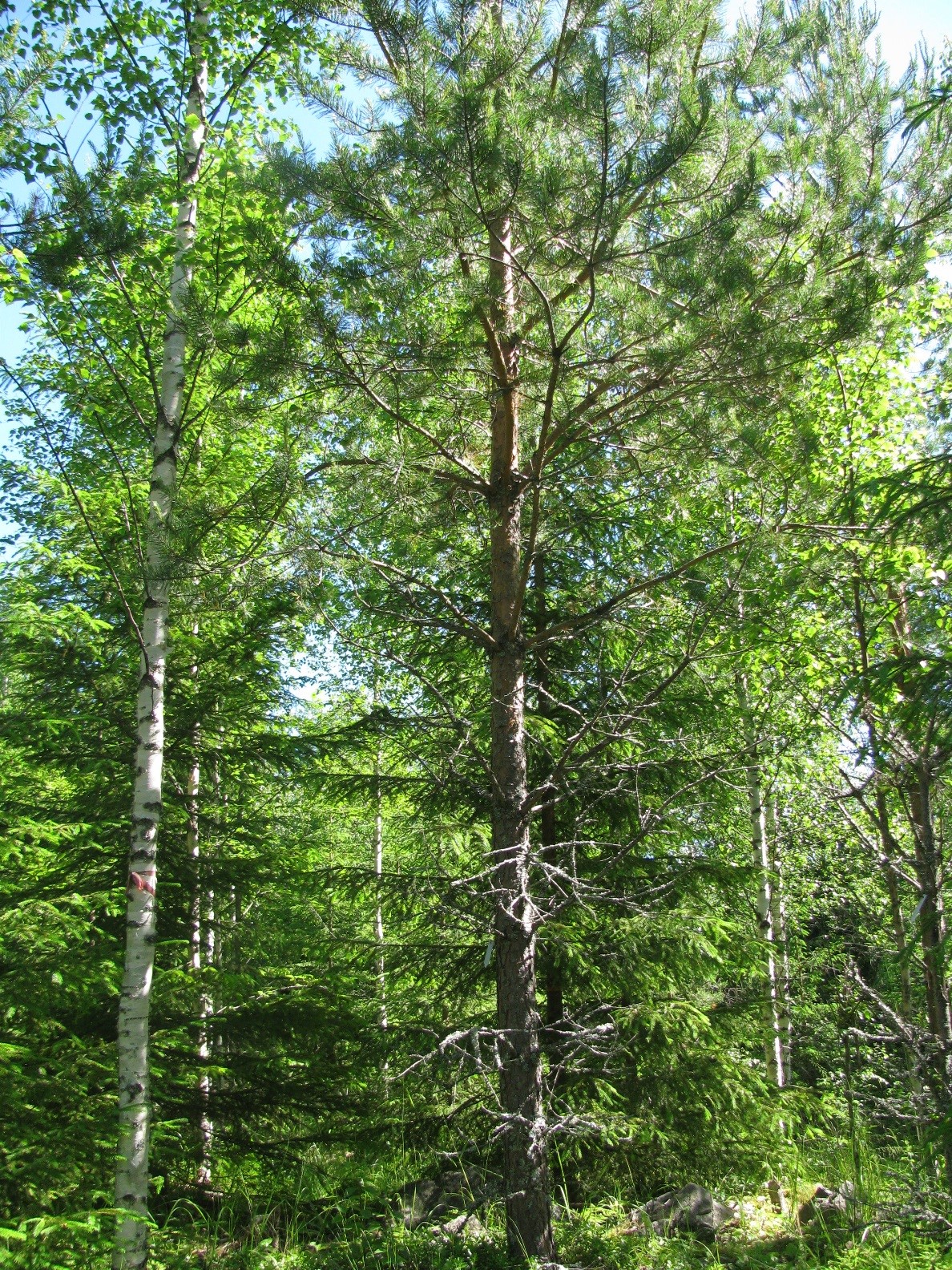
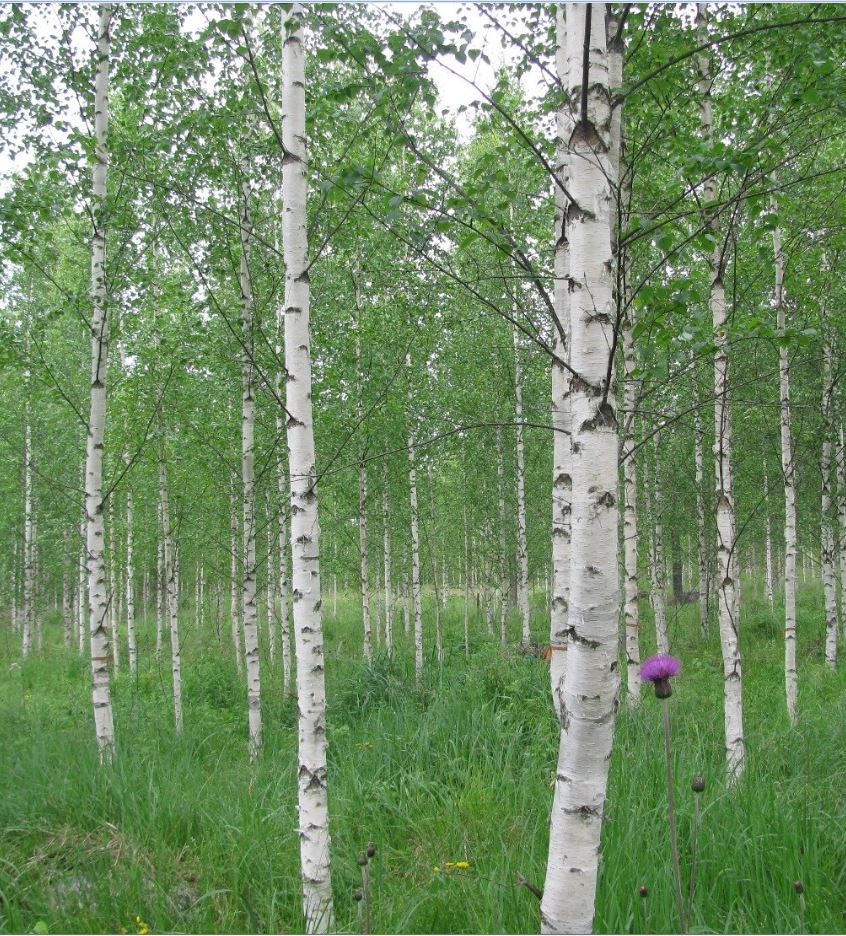
A birch-pine-spruce mixture in the tree species diversity experiment and a plot in the birch clone diversity experiment (2015).